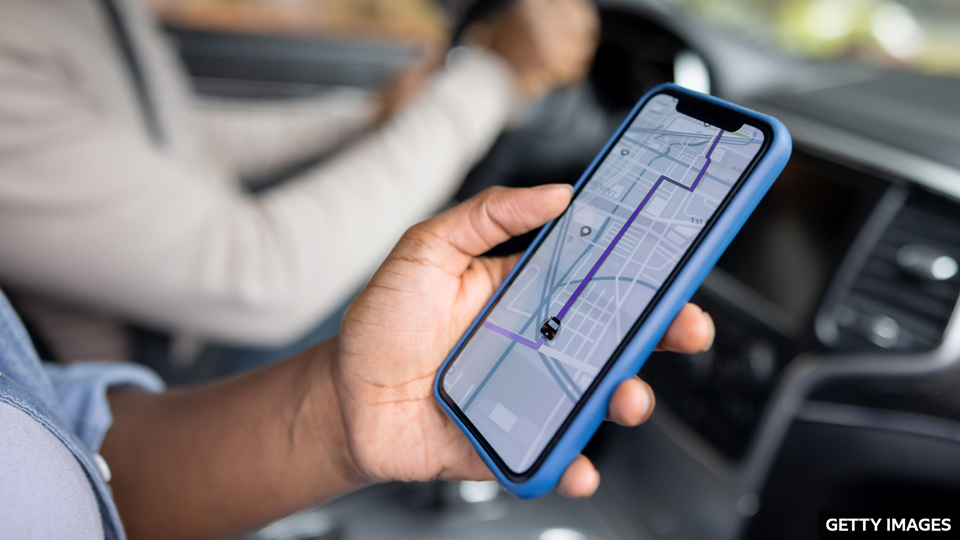你问我答
By、via和through表示“通过”的用法和区别

内容简介
听众 Brian 来信询问 “by”、“via”、“through” 和 “using” 之间的区别。介词 “by”、“via” 和 “through” 都有 “通过” 的意思。这既可以是通过一处到另一处,“via A to B”;也可以是路过一处,“through A to B”;还可以是通过或借助一个工具到达某地,“by train”。动名词 “using” 虽然也可以用来引出 “做某事时使用的工具或方法”,但它不能和以上三个介词互换使用。听节目,学习这四个单词的具体用法。
文字稿
(关于台词的备注:请注意这不是广播节目的逐字稿件。本文稿可能没有体现录制、编辑过程中对节目做出的改变。)
Feifei
大家好,欢迎收听 BBC英语教学制作的 “你问我答” 节目。我是菲菲。
Phil
Hello, I'm Phil. Here's a question from our listener Brian.
Question
Greetings. I'm Brian. I would like to know the differences between 'by', 'via', 'through', and 'using'. Thank you.
Phil
There's a big overlap between these words, but they're all different, so it's a great question to ask!
Feifei
Brian 的问题中提到的四个单词 “by”、“via”、“through” 还有 “using” 的意思虽然有重叠和容易被混淆的地方,但它们是完全不同的四个词语。首先,我们来看如何使用 “via” 和 “through” 谈论在旅行中 “通过某地”。
Phil
OK, when we're talking about a journey, if you say you're going via somewhere, then you're saying that it's one of the places you're going to on your route, and it might be somewhere you stop, or it might just be somewhere you travel past. If you say you are going through somewhere, it can mean that you'll go from one side of a place to the other, but we also use it to mean 'travel past'. Listen to these examples.
Examples
We're going to Manchester via Birmingham and Stoke.
(我们要经过伯明翰和斯托克去曼彻斯特。)
We're going to Manchester through Birmingham and Stoke.
(我们去曼彻斯特的路上会经过伯明翰和斯托克。)
Feifei
上面两个例句中的旅行目的地都是曼彻斯特。第一个例句说:“We're going to Manchester via Birmingham and Stoke.”,意思是 “去曼彻斯特的途中要经停伯明翰和斯托克。” 而第二个例句的意思则是 “去曼彻斯特的途中我们会经过伯明翰和斯托克,但不一定会停下来。” “We're going to Manchester through Birmingham and Stoke.” 所以,如果我们从 A 处 “via(经停,经过)” B 处,到达 C 处,那么中途很可能会在 B 处停留,但不绝对;而如果我们从 A 处 “through(经过)” B 处,到达 C 处,那么只是路过 B 处。也就是说,如果要强调旅途当中在商店或者景点停留,那么最好使用 “via”。再来听两个例句。
Examples
I'm going to the office via the supermarket – I need to buy lunch.
(我要在去办公室的路上去趟超市,我得买午餐。)
We're going to the theme park, but we're going via the cafe – we need some coffee first!
(我们要去那个主题公园,不过需要先去咖啡馆,得先喝杯咖啡。)
Phil
Next, we can also use 'via' to talk about the way we do something, for example, 'via sending a message' or the thing that we use to do it, 'via a quick meeting' – but it's more common to use 'by'.
Feifei
“Via” 后面直接加名词,可以表示 “使用一个工具或通过一种方式做某件事情”,比如 “via sending a message(通过发一条短信息)”、“via a quick meeting(通过一个短的会议)”。不过,在表达这个意思时,更常用 “by”。来听四个例句。
Examples
The easiest way to get to Manchester is via train.
(去曼彻斯特最便捷的方式是坐火车。)
You can get to Scotland by train easily.
(你坐火车去苏格兰很方便。)
I asked them about the job via email.
(我通过电子邮件向他们询问了关于那份工作的事情。)
The best way to contact me is by phone.
(最好通过电话联系我。)
Phil
We also use 'by' before an action that we use to achieve something else.
Feifei
“By” 还可以用在一个动作之前 “by doing something” 来表示 “通过某种方式完成一件事情”。
Examples
You knead the dough by rubbing the dough back and forth with your palms.
(你得用手掌来回揉搓面团。)
He saved the deer's life by untangling the net around its neck.
(他解开了缠在鹿脖子上的网,救了鹿一命。)
Feifei
“Through” 后面直接加名词,也可以表示 “通过做某事而达到一个目的”,但它强调 “通过一个程序或经过一个较长的过程”,强调持续时间较长的动作。
Examples
We made important discoveries through this experiment.
(通过这项实验,我们有了重大发现。)
Anyone can be successful through hard work.
(任何人通过刻苦努力都可能成功。)
Phil
If we want to talk about a method, or a tool for doing something, we can also say 'using' as well as 'through', 'via' and 'by'.
Feifei
不同于介词 “through”、“via” 和 “by”,“using” 作为动词 “use” 的动名词形式,可以作为句子中状语的一部分,对句子的主动词作补充说明,来表示 “做某事时使用的工具或方法”。它与上面讲到的三个介词不能互换使用。听三个例句。
Examples
She created this robot using the latest technology.
(她使用最新的技术创造了这个机器人。)
They dug their way out using their bare hands.
(他们徒手给自己挖出了一条路。)
Using an original Italian recipe is the secret to good pizza.
(使用正宗的意大利菜谱是做出美味披萨饼的秘诀。)
Phil
Don't forget that these words are not just used to talk about going past a place or doing something to achieve a goal – but we hope that we've answered your question here.
Feifei
如果你在英语学习的过程中遇到了难题或疑问,欢迎发邮件向我们提问,我们的邮箱地址是:questions.chinaelt@bbc.co.uk你也可以通过微博私信与我们取得联系,我们的微博账号是 “BBC英语教学”。
Phil
Thanks for listening. See you next time!
Feifei
Bye!



